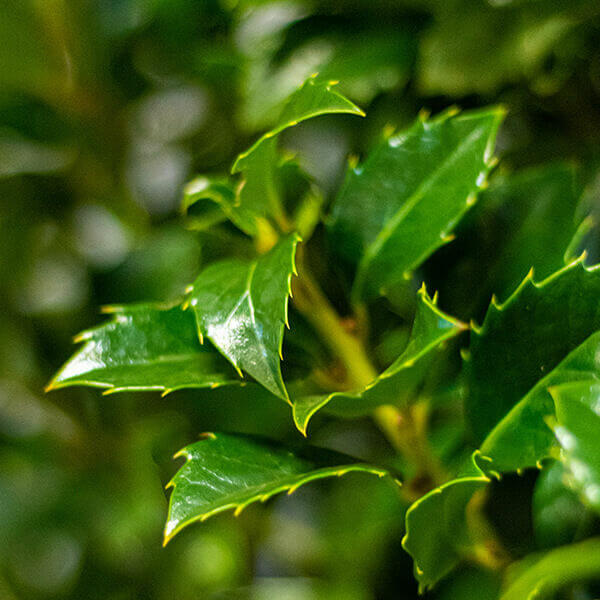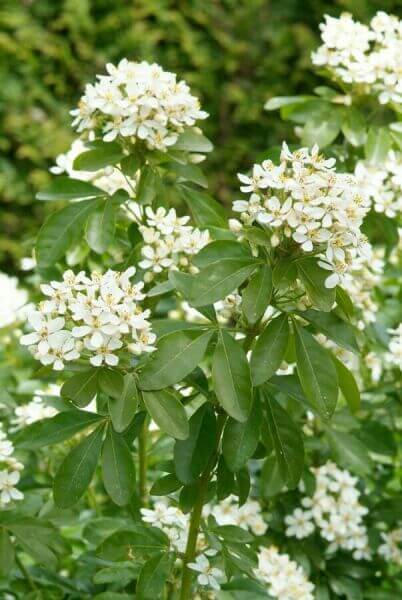Hedge Plants For Classic Borders
Hedge Plants For Classic Borders
Blog Article
Best Hedging Plants For Warm Climates
Improve your garden's allure with lavish hedge varieties such as Yew (Taxus), Thuja, Laurel, Photinia, and Bamboo, celebrated for their structural stability and environmental advantages.
Yew and Thuja provide evergreen protection and winter season resilience, while Laurel uses rapid growth and broad, aromatic leaves.
Photinia adds seasonal beauty with its dynamic red foliage, and Bamboo provides a low-maintenance, serene ambiance.
These hedges enhance air quality, decrease noise, and create tranquil, private areas.
Appropriate planting, spacing, and upkeep ensure energetic growth and eco-friendly consistency.
Explore how these rich ranges can elevate your garden's beauty and well-being.
Secret Takeaways
Change Your Garden With Lush Hedge Varieties
- Select Yew for its dense, evergreen development and unparalleled longevity.
- Choose Laurel for its quick development and broad leaves, ensuring quick personal privacy.
- Pick Photinia for its lively seasonal foliage, which turns a striking dark red.
- Utilize Bamboo for a low-maintenance, winter-hardy hedge with aesthetic appeal.
- Space plants 2-3 per meter and prune routinely for ideal development and health.
Popular Hedge Plants
When changing a garden with rich hedge ranges, it's necessary to consider popular hedge plants such as Yew, Thuja, Laurel, and Photinia due to their unique characteristics and advantages.
Yew (Taxus) is extremely esteemed for its durability and thick, green development, making it a prime option for withstanding landscapes.
Thuja is noted for its evergreen foliage and robust winter durability.
Photinia adds seasonal vibrancy with red leaves that darken in time, creating vibrant visual appeal.
Laurel uses fast growth and fragrant, broad leaves, ideal for quick personal privacy.
In Addition, Bamboo is an exceptional choice for ambiance, using a low-maintenance, winter-hardy alternative that improves the garden's aesthetic with its elegant, swaying canes.
These choices deal with a variety of horticultural requirements and choices.
Benefits of Garden Hedges
Garden hedges use a plethora of advantages, making them a valuable addition to any landscape. These natural barriers are cost-efficient to execute and provide significant wind defense, improving air circulation and adding to noise decrease. The dense foliage of hedges like Thuja and Beech makes sure privacy by blocking visibility, developing a serene and remote environment.
Hedges also play an important role in microclimate policy, providing a stable environment that cultivates plant growth and lessens temperature changes. Their complex leaf structures filter contaminants, improving air quality and contributing to a healthier garden environment.
Additionally, hedges stand out in noise reduction, soaking up and deflecting acoustic waves to lower ambient sound levels. This dual functionality of supplying both acoustic and visual privacy enhances the total tranquility and aesthetic appeal of any garden.
Planting and Upkeep Tips
For a successful hedge, precise preparation of the planting area is essential. Make sure the soil has proper pH and drainage to support strong root advancement.
Space the plants appropriately for the selected types. Water the hedge frequently during its preliminary development stage, adjusting as required with seasonal modifications.
Implement a methodical insect control and illness prevention strategy, using natural or chemical treatments when required. Routinely check for aphids, termites, and fungal infections.
Apply mulch to retain moisture and suppress weeds. Seasonal pruning promotes dense growth and air flow, necessary for plant health.
Following these standards will help you cultivate a dynamic, properly maintained hedge that boosts the beauty of your garden.
Spacing and Trimming Guidelines
Spacing and Trimming Guidelines
Proper spacing and trimming are crucial for cultivating healthy, visually appealing hedges. Adequate spacing makes sure each plant receives adequate nutrients, light, and air flow.
Follow these guidelines for optimum hedge maintenance:
- Spacing: Position hedge plants 2-3 plants per meter to encourage robust development.
- Pruning Techniques: Routine pruning is important for keeping preferred hedge height and shape. Trim brand-new growth in summer and cut down older wood during winter season.
- Seasonal Care: Change trimming methods and schedules according to seasonal requirements to guarantee plant health.
- Hedge Height: Regularly display and trim to keep the preferred hedge height and attain uniform aesthetics.
Sticking to these actions will ensure your hedge grows, improving both the appeal and performance of your garden.
Selecting the Right Hedge
Picking the Right Hedge
Selecting the suitable hedge includes evaluating aspects such as mature height, foliage density, and environmental durability. Effective hedge plant selection requires comprehending each types' growth qualities and site-specific flexibility.
For example, Yew (Taxus) offers outstanding durability and thick development, while Thuja is noteworthy for its winter season strength. Additionally, considering maintenance requirements is important; fast-growing types like Laurel or Privet need routine cutting, whereas low-maintenance options like Bamboo or Ivy might be more suitable for those looking for very little maintenance.
Ecological aspects such as soil type, light schedule, and wetness conditions need to also guide the selection procedure. This mindful approach guarantees the selected hedges will prosper, offering both functional and aesthetic advantages to the garden landscape.
Shipment and Planting Suggestions
To guarantee your hedge plants grow, they must be provided by specialized carriers and planted immediately upon arrival.
Follow these important steps for successful planting:
- Soil Preparation: Improve the soil with natural matter to improve drainage and nutrient material.
- Planting Depth: Produce a trench twice the width and equal to the depth of the root ball.
- Watering Strategies: Water completely after planting, keeping the soil consistently wet however not saturated.
- Mulching: Apply a layer of mulch to maintain moisture and suppress weeds.
Consumer Support and Service
Given the important role of prompt support in horticultural pursuits, our customer assistance team is readily available 6 days a week through telephone, email, and social networks to provide skilled recommendations and swiftly resolve any concerns. Their devotion to quick reaction times ensures client satisfaction by solving inquiries connected to plant health, optimal planting approaches, and maintenance schedules.

Communication Method
Email
This thorough assistance system, strengthened by a stellar 9.3/ 10 consumer score, highlights our commitment to boosting the gardening experience for each client.
Often Asked Questions
How Long Does It Consider Hedge Plants to Establish?
Hedge plants normally require one to 3 years to become completely established, with the precise duration varying by types and growing conditions.
Effective care throughout this critical period is necessary for robust growth. Constant watering, vigilant weed control, and suitable fertilizer application are essential in promoting strong root development.
For instance, fast-growing types like Laurel may establish quicker, while slower-growing varieties such as Yew might take longer. Thorough maintenance speeds up the facility process, resulting in healthy and thick hedges.
What Are the very best Hedge Plants for Privacy?
The concern of the very best hedge plants for privacy involves assessing evergreen and deciduous alternatives.
Evergreen hedges like Thuja, Laurel, and Cypress supply year-round coverage, ensuring continuous personal privacy.
On the other hand, deciduous hedges such as Beech use seasonal personal privacy, shedding leaves in colder months.
Key maintenance suggestions for personal privacy hedges consist of routine cutting, fertilizing in spring, and correct spacing-- normally 2 to 3 plants per meter.
In addition, constant watering and thorough weed elimination are vital for promoting healthy, thick development.
Can Hedge Plants Bring In Wildlife to My Garden?
Yes, hedge plants can bring in wildlife to your garden by supplying necessary advantages like shelter, food, and nesting websites, consequently improving regional biodiversity. For circumstances, yew, holly, and laurel are outstanding for drawing in birds, while ivy supports a variety of insects.
However, it is essential to keep in mind that there are some downsides, such as increased maintenance to manage bugs and routine upkeep. Carefully picking and preserving hedge varieties can assist stabilize these benefits and drawbacks, ultimately cultivating a dynamic and sustainable ecosystem in your garden.
Exist Any Flowering Hedge Plants Available?
Yes, there are flowering hedge plants available that can boost the charm of your garden.
For example, Elaeagnus, likewise called Olive Willow, produces fragrant white flowers in the fall, including a touch of elegance.
Photinia, another popular option, showcases dynamic red leaves that grow into a rich green, creating a dynamic visual effect throughout the seasons.
To guarantee these plants thrive, it's vital to practice proper pruning strategies and seasonal maintenance, such as trimming brand-new growth in the summertime and cutting down in the winter.
These procedures will help preserve the health and visual appeal of your flowering hedges.
How Do I Prevent Insects in My Hedge Plants?
To avoid pests in hedge plants, utilize natural bug control methods and keep proper hedge care. Present beneficial insects like ladybugs, which take advantage of damaging pests, to create a balanced environment.
Frequently inspect your hedges for signs of invasion and promptly remove any affected parts to prevent the spread. Guarantee the health of your hedges by using well balanced fertilizers and supplying adequate water.
Utilize mulching to retain soil moisture and appropriate spacing to decrease plant stress and promote robust growth. These practices collectively help in lessening insect problems and preserving a healthy hedge.
Conclusion
In essence, selecting the best hedge varieties such as Yew, Thuja, and Laurel can transform any garden into a relaxing haven. These plants offer year-round greenery, enhance visual appeal, and deal useful advantages like noise reduction and wind protection.
Correct planting strategies, precise spacing, consistent watering, and seasonal trimming are vital for optimum development.
Trustworthy shipment services and skilled consumer assistance guarantee a seamless experience from purchase to planting, making it easier than ever to elevate your outdoor area.
Garden hedges use a wide variety of benefits, making them a valuable addition to any landscape. These natural barriers are affordable to implement and supply considerable wind protection, boosting air read more flow and contributing to noise decrease. The dense foliage of hedges like Thuja and Beech makes sure privacy by blocking visibility, developing a peaceful and secluded environment.

Pruning Techniques: Regular pruning is vital for preserving preferred hedge height and shape. Trim new development in summer season and cut back older wood throughout winter.
Report this page